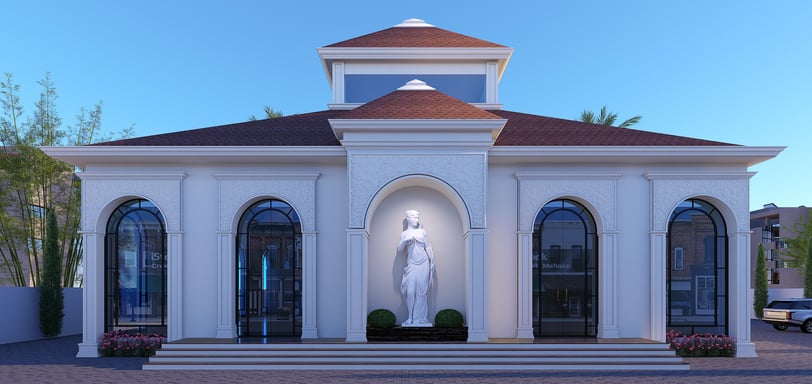A key Consideration for Budget Conscious Planning
Ar. Nitin K Shrivastava & Ar. Monika Shrivastava
3 min read


Key Considerations for Budget-Conscious Planning
Budget-conscious planning is essential for achieving financial goals without overspending, whether you're managing a personal project, building a home, or handling a business venture. To ensure that you stay within your financial limits while still meeting quality and functionality expectations, here are the key considerations for effective budget-conscious planning:
1. Set Clear Objectives
Define your project goals and needs. Whether it's building a home, starting a business, or launching a personal project, clearly outline what you aim to achieve.
Prioritize the essentials and distinguish between “needs” and “wants” to focus your budget on the most important areas first.
2. Create a Realistic Budget
Start by researching the typical costs associated with your project and set a realistic budget based on this research.
Break down the budget into categories, such as materials, labor, permits, and contingency.
Ensure that your budget includes an extra margin (typically 10-15%) for unforeseen costs.
3. Research and Compare Costs
Take time to research and compare costs for materials, services, and products. Shopping around and comparing multiple suppliers or vendors can save significant amounts.
Use online tools and platforms to compare prices and read customer reviews to find affordable yet reliable options.
4. Plan for Contingencies
No matter how thorough your plan is, unexpected costs may arise. Allocate a portion of your budget (10-15%) specifically for contingencies and emergency expenses.
Being prepared for overruns will help prevent delays and disruptions in your project.
5. Choose Quality Over Quantity
While budget-conscious planning often means reducing costs, it’s crucial to focus on quality over quantity. Cheap materials or services might cost less upfront but can lead to higher repair and maintenance costs in the future.
Prioritize durability, especially for key items like construction materials, equipment, and infrastructure.
6. DIY Where Possible
Consider taking on tasks you can handle yourself to reduce labor costs. This could include painting, landscaping, or simple renovations.
Be realistic about your skills and time availability. Doing it yourself can save money, but poor-quality work could lead to higher costs down the line.
7. Negotiate with Vendors and Contractors
Don’t hesitate to negotiate prices with vendors and contractors. Many are open to adjusting costs based on the scope of work or long-term relationships.
Ask for discounts for bulk purchases or early payments, which can lead to cost savings.
8. Track Expenses Regularly
Monitor your spending as the project progresses. Use apps, spreadsheets, or budgeting tools to keep track of every expense.
Regular tracking will help identify overspending early on, allowing you to make adjustments before it’s too late.
9. Phased Planning
Consider breaking the project into phases if the budget is tight. This allows you to complete essential parts of the project first and postpone non-essential items to a later stage.
Phased planning helps avoid large upfront costs while still progressing towards your goal.
10. Avoid Last-Minute Changes
Last-minute changes often lead to increased costs and delays. To avoid this, make sure your planning is as detailed and thorough as possible from the outset.
Communicate your vision clearly with everyone involved (contractors, suppliers) to minimize confusion and rework.
11. Sustainable Practices
Consider using sustainable materials and energy-efficient solutions. While they may have higher initial costs, they will save money in the long run by reducing energy consumption and maintenance needs.
Government incentives or tax credits for energy-efficient building materials or appliances can further reduce costs.
12. Utilize Affordable Alternatives
opt for affordable yet functional alternatives for non-essential areas. For example, use cost-effective materials for temporary fixtures or use simpler designs for finishes like cabinetry and flooring.
Explore second-hand or recycled materials where appropriate, which can offer substantial savings without compromising quality.
13. Evaluate Long-Term Costs
Factor in long-term operating and maintenance costs in your budget. Low upfront costs can be deceiving if they lead to higher maintenance or utility expenses in the future.
Invest in items that offer better efficiency or durability to minimize future costs, even if they require higher initial expenditure.
Conclusion
Effective budget-conscious planning requires a balance between saving money and achieving your project goals. By setting clear priorities, being flexible where possible, and planning for unexpected costs, you can stick to your budget without compromising the quality and success of your project. Regular tracking, careful research, and thoughtful decision-making are key components in ensuring that you maximize value without breaking the bank.


